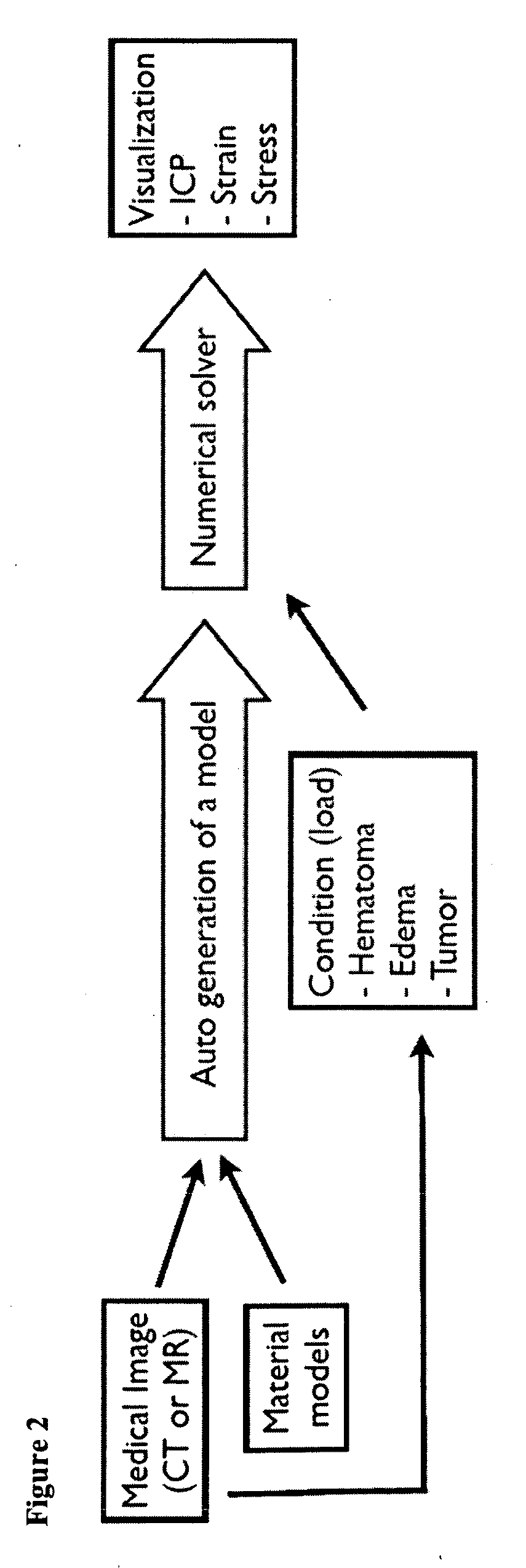Non-invasive brain injury evaluation
- Summary
- Abstract
- Description
- Claims
- Application Information
AI Technical Summary
Problems solved by technology
Method used
Image
Examples
example 1
Communicating Ventricular System
Construction of the Aqueduct of Sylvius and a Simulated Outflow from the Fourth Ventricle
[0070]When developing a FE-model of the brain it is beneficial if the model can mimic the brain compliance. Therefore remodelling of the flowing properties of the ventricular cerebrospinal fluid (CSF) is one aspect of the invention. The CSF makes up a circulatory system in the intracranial space. CSF is formed deep within the brain in the ventricles, from where it then flows out into the subarachnoid space and finally drains into the sinuses and follows the venous blood out of the skull. The compliance function of the brain is dependent on the existence of such communication so that CSF can be evacuated from the intracranial space in the presence of an expanding mass lesion. In the original “KTH head” model, no interventricular communication existed. In order to mimic any brain compliance, communicating channels in the ventricular system had to be constructed, or ...
example 2
The Principles of the FEM-Analysis of the Brain
[0077]The principle outlined is of the disclosed invention with measuring ICP (IntraCranial Pressure) and strain due to hematoma inside the skull. When admitting a patient to the hospital, who has experienced a traumatic accident, examination at the radiology department will be carried out using CT (Computer Tomography). In cases where bleeding is occurred inside the skull, an assessment of ICP is necessary in deciding whether the patient should be operated on or not. Using the disclosed invention which is a non-invasive method, unnecessary incision is avoided, saving money for the hospital and minimizing suffering for the patient.
[0078]The material used in the example is:
a. three-dimensional CT images of the patient's head.
b. a computer with finite element solver.
[0079]A finite element solver is computer software that calculates the approximated solutions to the partial differential equations and in this case specifically analyzes stru...
PUM
 Login to View More
Login to View More Abstract
Description
Claims
Application Information
 Login to View More
Login to View More - R&D
- Intellectual Property
- Life Sciences
- Materials
- Tech Scout
- Unparalleled Data Quality
- Higher Quality Content
- 60% Fewer Hallucinations
Browse by: Latest US Patents, China's latest patents, Technical Efficacy Thesaurus, Application Domain, Technology Topic, Popular Technical Reports.
© 2025 PatSnap. All rights reserved.Legal|Privacy policy|Modern Slavery Act Transparency Statement|Sitemap|About US| Contact US: help@patsnap.com



